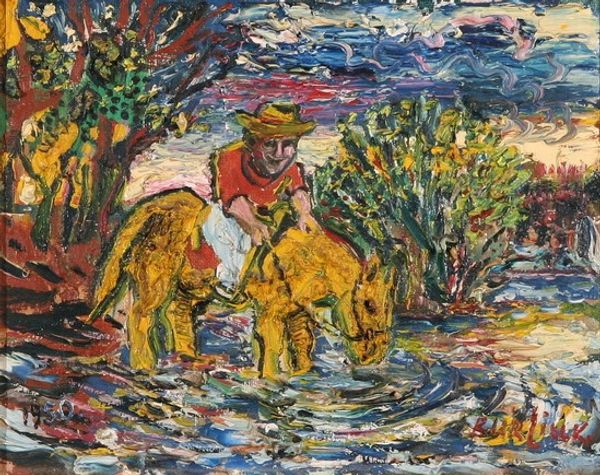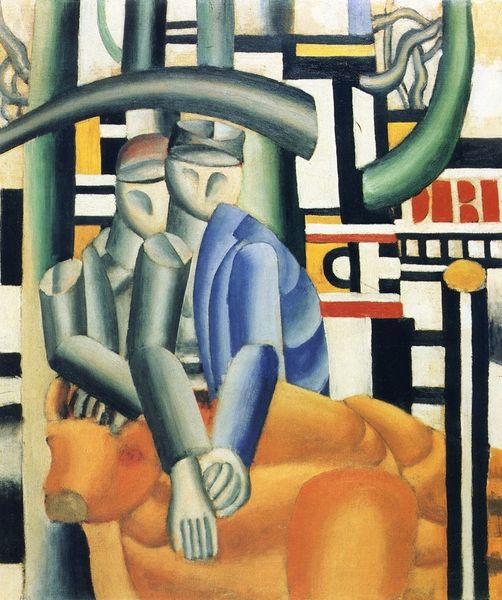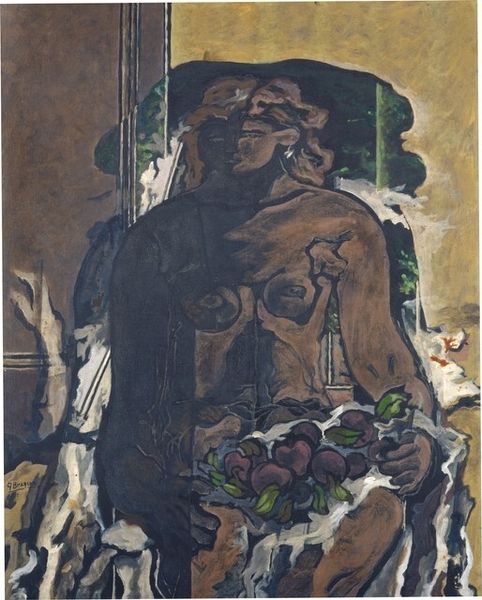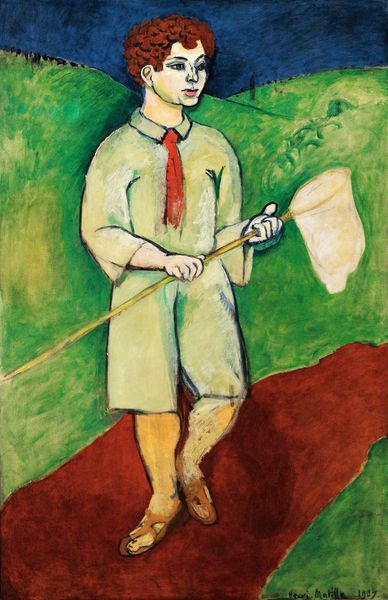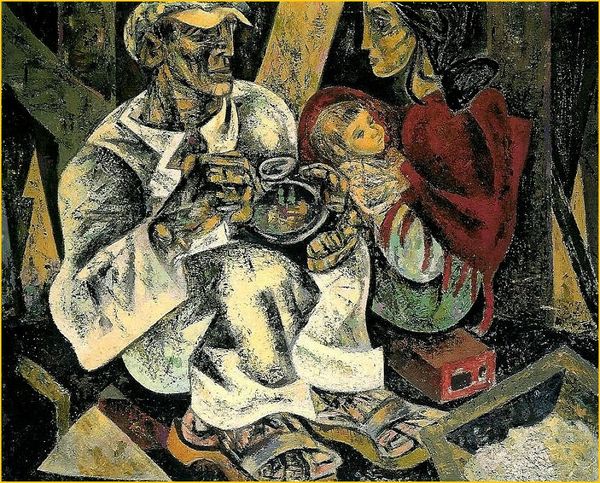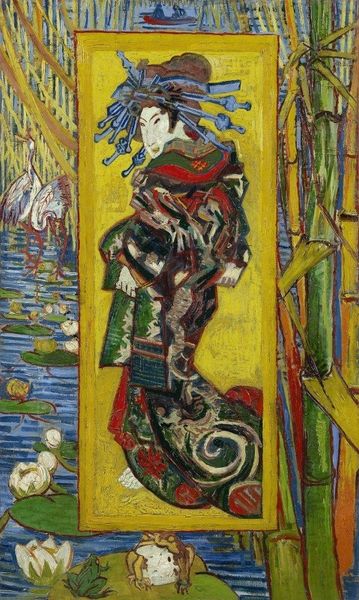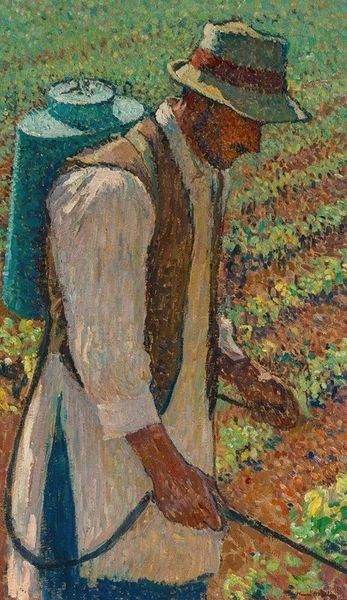
Dimensions: 91 x 70 cm
Copyright: Public domain
Editor: Here we have Kazimir Malevich’s "Gardener," painted in 1911. It’s really striking—almost jarring—with these bold blocks of color shaping the figures. There’s something both powerful and unsettling about the obscured faces. What catches your eye, what symbols do you see at play? Curator: The masked faces, rendered in stark red, immediately grab attention. It’s important to remember the era. Painted on the cusp of massive social upheaval, are these figures robbed of identity, perhaps dehumanized by their labor? What does masking communicate about the personal cost of cultivation? Editor: That’s fascinating. I hadn’t considered the social commentary angle. I was too caught up in the vibrant colors! Curator: Indeed. The vibrant yellows and reds are indicative of Fauvist influence. Colors are employed not realistically but for their emotive value, heightening psychological impact. Consider how that plays against the facelessness— does color create emotional friction or resonance? Editor: I see what you mean. It’s like the colors are shouting what the figures can't express. It makes you wonder about their story, almost a feeling of repressed emotion. Curator: Precisely! And consider the tools of labor, shovel, pots. Are they simply objects, or do they stand in as metaphors for societal structures, growth, and constraint? Notice how Malevich reduces human beings and objects to their bare essence, what survives of shared visual recognition. Editor: This really shifts my perception of the work. What appeared merely like bright blocks is rich with hidden meanings. Curator: Art invites these layered interpretations; each brushstroke carries historical and personal symbolism waiting to be deciphered. Every artwork represents our continuous search to be identified in symbolic imagery.
Comments
No comments
Be the first to comment and join the conversation on the ultimate creative platform.






